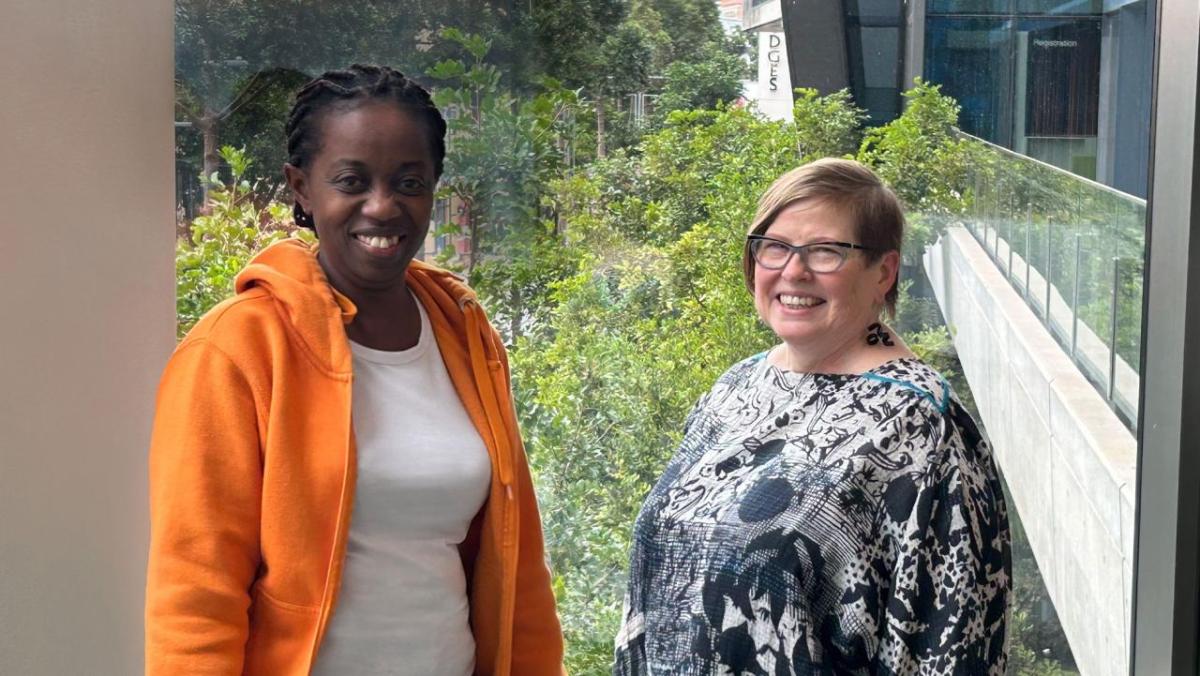Gilead’s Focus on Ending the HIV Epidemic for Children Everywhere

"I am tired, so tired. When will this end?" That’s the refrain that Dr. Eva Natukunda, a pediatric HIV specialist at the Joint Clinical Research Center in Kampala, Uganda says she often hears from adolescents and young adults living with HIV.
Eva has been following many of these patients since birth and finds that by the time they reach adolescence, children who have grown up living with HIV are weary of having to take 4 to 6 pills every day, since single-tablet regimens are not accessible everywhere for children. Some who stop taking their pills experience a resurgence of the virus and risk one day having children with HIV – “and then the epidemic continues with another generation of babies,” she says.
But Eva wants to break this cycle. She’s one of many clinicians around the globe partnering with Gilead scientists to help find more advanced and accessible therapies for the estimated 1.7 million children globally who are living with HIV – 9 out of 10 of whom are in sub-Saharan Africa.
“Medications for children have historically lagged behind those for adults,” says Kathryn Kersey, Executive Director of Gilead’s Virology Clinical Development. “I think it’s fair to say that children living with HIV have been left behind and there’s a need to close the gap between treatment options available for adults and children.”
In fact, according to the World Health Organization’s 2020 figures, only 54% of children with HIV are on antiretroviral therapy compared to 74% of adults.
There are many reasons for gaps in medications for children, according to Eva. Limited studies in the young result in limited drug options, and there can be a lack of adherence due to regimens that require multiple doses of different therapies. Other times, medications can be unpalatable and just plain difficult for children to take.
“In some parts of the world, drug availability is the obstacle,” says Kathryn. “And stigma also still deters some parents from seeking care for their children.”
Gilead has been at the forefront of helping transform the treatment and prevention of HIV for decades, and it is also focused on helping speed the development and accessibility of new medications for children. Last year, it opened the global Pediatric Centre of Excellence in Dublin to coordinate and optimize the execution of pediatric clinical trials.
“The goal is to develop innovative therapies and have them approved sooner so they can reach children across the globe that much faster,” explains Kathryn.
At the center, more than 100 employees are devising and studying new therapies for HIV, hepatitis and COVID-19. Scientists have also begun investigating new pediatric cancer treatments and will soon begin studies on treatments for childhood inflammatory conditions.
Medication Challenges in Children
“It’s the old cliché – children are not mini-adults,” says Kathryn. “There are many different considerations in terms of how their bodies respond to medication – issues of metabolism and the impact on developing organs.”
There are practicalities in terms of how to perform clinical studies in children, including informed consent and seemingly routine matters, such as how to draw a blood sample from a child. In addition, children can struggle taking large and bitter-tasting pills. To help overcome this last challenge, Gilead is collaborating with the Clinton Health Access Initiative and the Penta ID network to devise dispersible medications that can be dissolved in water in order to make medications more palatable for children. The partnership, which was announced earlier this month, especially aims to improve treatment and adherence rates among children living with HIV in low- and middle-income countries.
Kathryn notes that new single-pill regimens can also help with adherence but are not approved for the pediatric population in most low- and middle-income countries. In the future, she envisions medications being tested for children in parallel with the testing for adults to help prevent delays in availability for adolescents. But one of the most promising approaches is long-acting injectable medications, which could help youngsters and their caregivers with their medication routines.
“Injections could potentially make a big difference in the lives of teenagers. They are clamoring for this,” says Eva.
Young people are a key piece of the long-term strategy to end the HIV epidemic for everyone, everywhere. “If the HIV treatment gap between children and adolescents can be closed, we can stop the cycle,” adds Kathryn.

